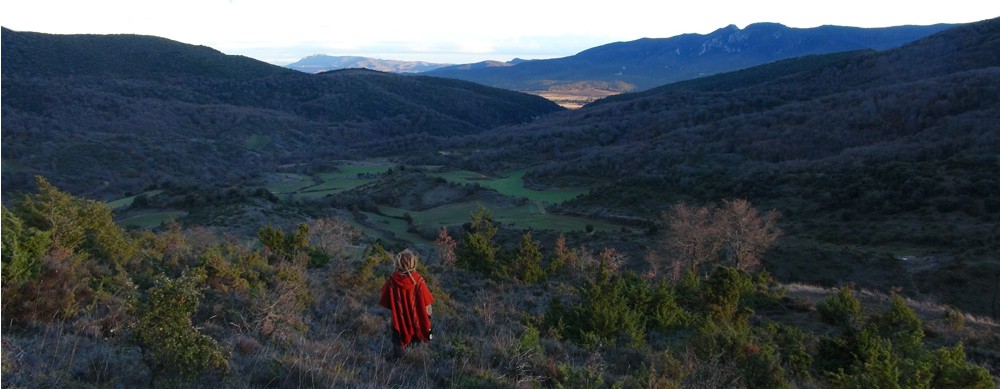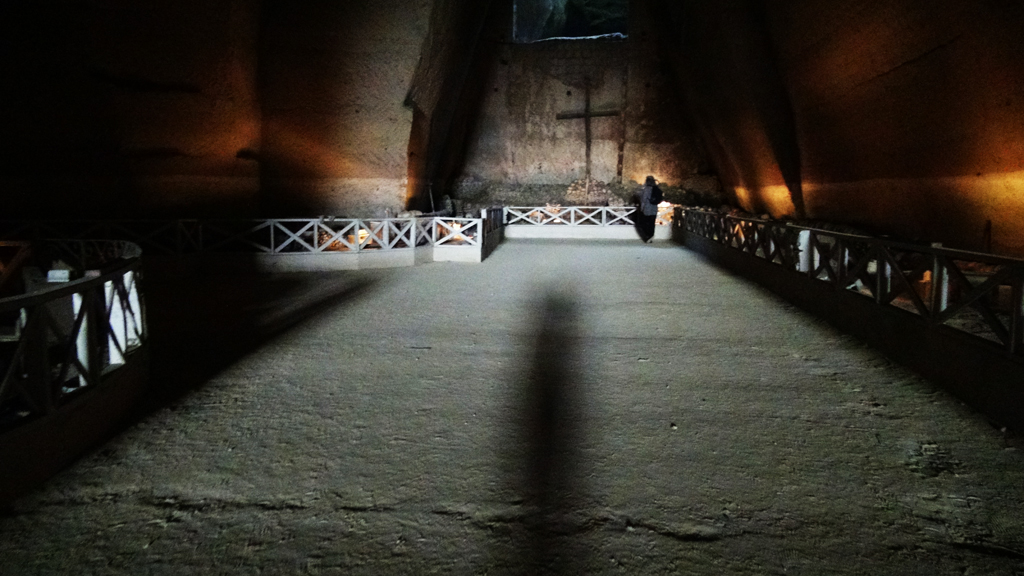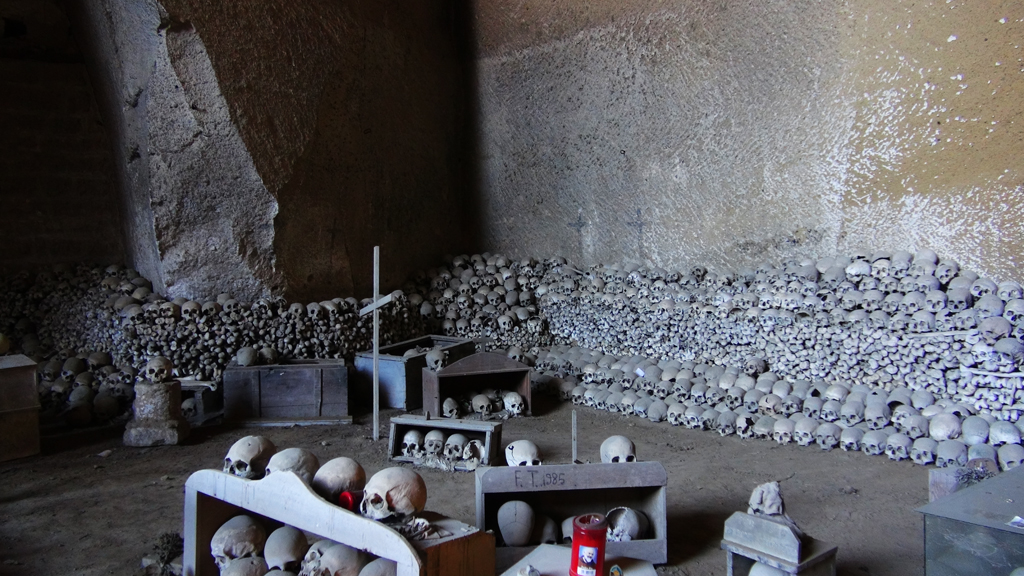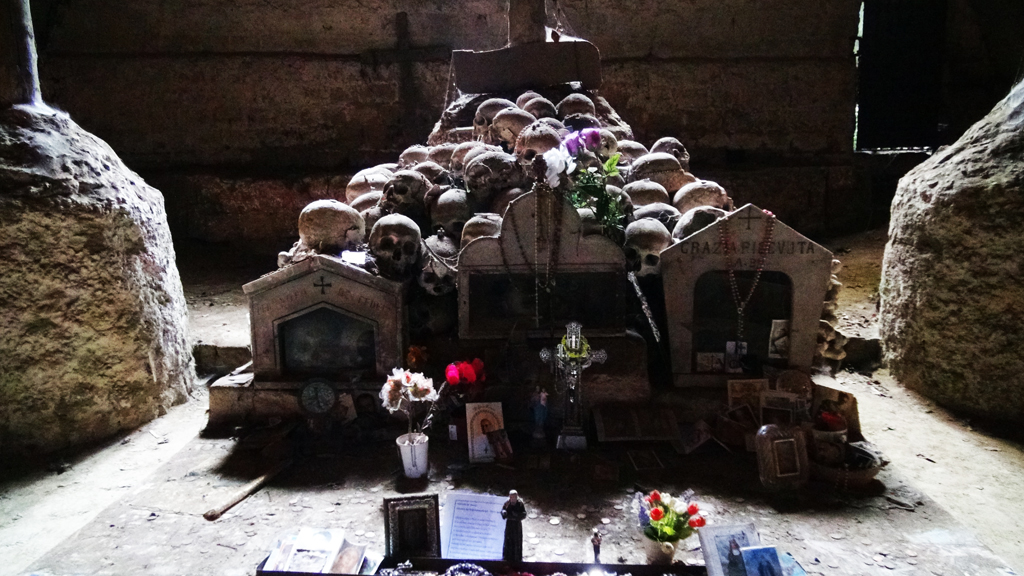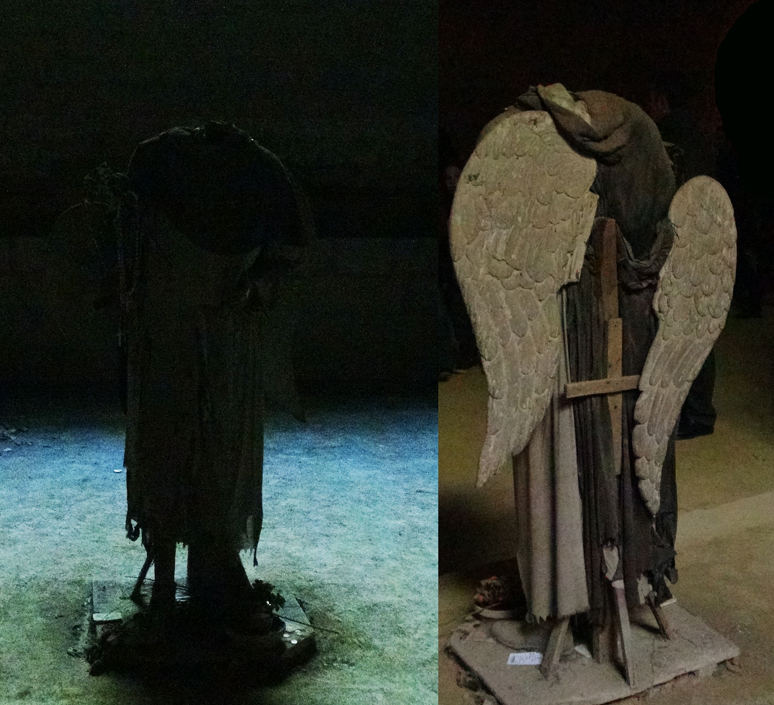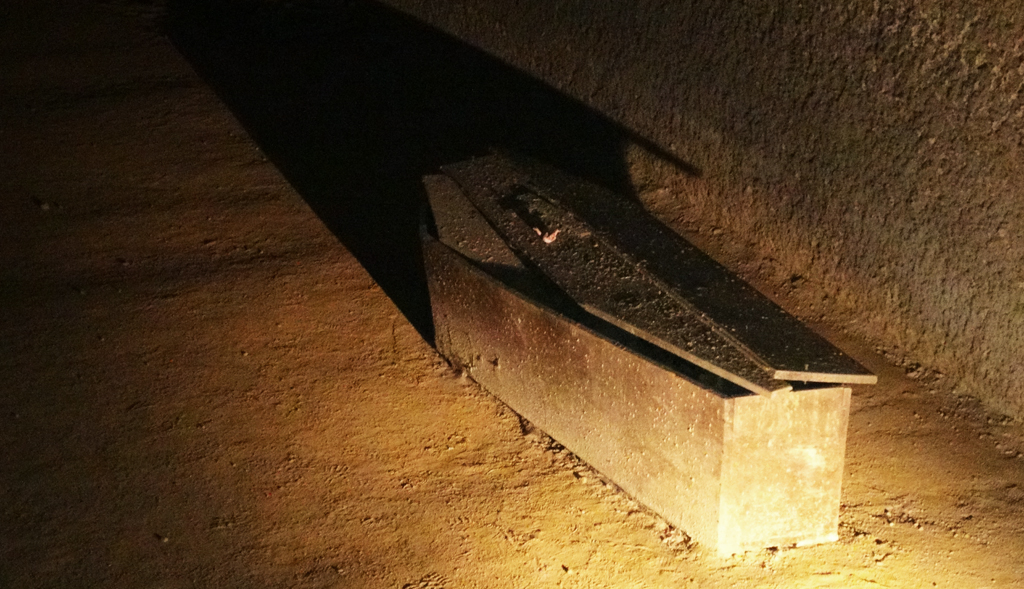The cemetery of Delle Fontanelle is one of the spookiest yet fantastic places we visited so far. In a cave under a hill in the district of Rione Sanita in Naples are the preserved bones of fourty thousand souls – a true city of the dead. As we drew near to the sight we walked down some old stone steps and onto a road leading through a steep rocky gully, “the valley of the dead”. The houses here seemed old and decayed, grasses and climbing vines protruded from the crumbling walls and the houses that were occupied had gardens and animals almost as if we had stepped into the ancient villages like those where we lived in Cilento. We followed the road up, past an ornate church, and toward an overgrown hill until we came to a huge natural cave that opened up into the cliff face to our left. There was a security guard at the gate but it was free to enter.
Inside it was cool, quiet and gloomy, arranged in rows columns and piles were the bones and sculls. The cave was a large complex lit with the faint natural light coming from holes in the rock, and the bones of the dead seemed to go on forever.
There was something disconcerting about the casualness with which the bones were stacked scull upon scull. But some were adorned with flowers or kept in glass boxes, while others were mummified.
Sculls were piled around statues of saints, crucifixes and headless angles. The place was macabre, beautiful, and oddly calming.
The cave had for centuries been a kind of open cemetery for the poor, “the indignant dead.” The cemetery acquired its first mass of bodies during the black plague in the seventeenth century, and its last during the cholera epidemics of 1837. Later in the nineteenth century, after Father Gaetano Barbati had the necropolis catalogued and organized, a cult devotion to the “indignant dead” sprang up in Naples. People cleaned the bones, presented them with flowers, beads, ornaments and candles, honouring those who had had no honour in life. The Catholic Church, which viewed it as a fetishistic cult, banned the practice, and in 1969 the cemetery was closed. It has only recently been reopened to visitors after large public protests.
